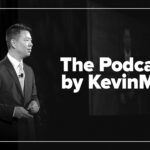Recently at the clinic where I’ve practiced for more than 30 years, the entire team became temporarily paralyzed by an IT glitch as a result of an upgrade, affecting the six-state organization. We weren’t able to use our EHR system. With the waiting room full of patients, we knew we had to move forward in rooming patients and switching to paper documentation. Our core mission is to take care of patients, and we pivoted to the easiest and fastest way to keep them from waiting or, worse, leaving.
Unfortunately, not everyone that day had the same mindset. Several patients were fasting for lab work, so without access to orders in the EHR, I handwrote prescriptions for labs and sent them to the phlebotomy draw station. I later learned that the lab staff sent the fasting patients home, telling them they could not draw their blood without a functional EHR. My patients, many of them elderly and frail, left.
There is nothing impossible about drawing the bloodwork, carefully confirming patient names and dates of birth, and hand-labeling vials of blood while waiting for the system to return to normal. Doing so would have saved the affected patients a second day of fasting, a second day of having to travel back to the lab, and, in some cases, a second day frail, elderly patients had to arrange for a family member or caregiver to accompany them to the lab.
Although one could argue that this experience demonstrates a lack of patient-centeredness in the care experience, I believe it is an example of a more pervasive phenomenon: Many health care workers no longer distinguish between their core mission and the chores that make up the delivery of those services. I call this core vs. chore.
Innovating on the spot
I suspect the staff who turned away patients did so with the understanding that their job was to use the lab information system they had been trained on to print labels and draw blood. When they ran into a snag with EHR, they became paralyzed and did not complete the task. Meanwhile, in the clinical setting, we were taking vital signs, talking to patients, examining patients, and determining medical assessments and plans, writing notes by hand. By distinguishing between our core job—taking care of patients—from the chore associated with it—adequately documenting the clinical interaction in the electronic health record—we were able to satisfactorily perform our work with minimal disruption to patient flow. The medical assistant helping me that morning simply said, “Dr. Terrell, we’re old school and we know what to do!”
By “old school,” the medical assistant understood that our core work is different from the tools we use to do that work, and therefore we were able to innovate on the spot to keep patient needs and experience front and center. We carefully documented our clinical findings the old-fashioned way, with pen and paper, later converting the information to the EHR.
In a mission-focused environment, core work may be easier to distinguish from chores, allowing frontline workers to center their efforts on the critical work they do for patients. It also can help resolve some of the wickedest problems we face in health care: excessive costs of providing services, clinician burnout, exorbitant levels of administrative burden, and poor patient experiences in the clinical setting.
Care delivery models can be redesigned to manage the competing priorities that clinicians and staff face. If a task does not have to be done by a physician, then it shouldn’t be, and if it doesn’t have to be done by the clinician’s in-office staff, then it shouldn’t be. Realigning tasks such that a technology-enabled global delivery team supports back-office extended care teams empowers in-clinic care teams, significantly reducing staff workload, improving efficiency, and reducing burnout.
Removing physicians from the “chores” of medicine
Much of the problem arises from the unnecessary chores added to the work of health care professionals as a result of poorly designed technology, increasing regulatory requirements, and inadequate attention to effective workflow design in complex health care environments. Consequently, the actual nature of the work clinicians and their teammates perform is changed and degraded.
One study performed in a community emergency department of physicians using electronic health records showed the mean percentage of time spent in direct contact with patients was 28 percent, with pooled weighted average time allocations at 44 percent on data entry, 28 percent in direct patient care, 12 percent reviewing test results and records, 13 percent in discussion with colleagues, and 3 percent on other activities. The total mouse clicks per physician approached 4,000 during a busy 10-hour shift.
The widespread adoption of electronic health records in medical care has resulted in increased physician documentation workload and decreased interaction with patients. For every hour of direct patient care, physicians spend nearly two additional hours on unpaid EHR and desk work, and an additional two hours of after-hours work each night devoted mostly to EHR tasks. EHRs, as currently implemented, increase clerical workload and physician stress, and interfere with direct physician-patient interaction. This diminishes professional satisfaction and contributes to professional burnout. Clinicians using medical scribes are associated with less self-reported after-hours EHR documentation, and physicians using scribes are associated with a higher likelihood of spending more than 75 percent of the visit interacting with the patient and less than 25 percent of the visit on a computer.
Information chaos
The current clinical chores I perform are done within an environment fraught with “information chaos.” Information chaos consists of various combinations of information overload, information underload, information scatter, information conflict, and erroneous information. Information chaos is experienced routinely by physicians due to the magnitude of work environments in which we practice.
One way to solve for the burnout from information chaos is to understand how to reimagine organized systems of care. The concept of “practicing to the top of one’s license” highlights physicians and other clinicians doing the work they were trained to do rather than administrative tasks that can be done by others. Unfortunately, much of the EHR is designed with highly trained physicians doing most of the work. I believe if it doesn’t have to be done by a clinician, then it shouldn’t be. And if it doesn’t have to be done in person, then it shouldn’t be. Once the tasks of providing care are broken into constituent components, whole new ways of imagining health care work are possible. On the clinical side, a clinician can be supported by an in-clinic team, an extended care team outside the office, and even a tech-enabled globalized delivery team.
Grace E. Terrell is a physician executive.






















![Preventing physician burnout before it begins in med school [PODCAST]](https://kevinmd.com/wp-content/uploads/The-Podcast-by-KevinMD-WideScreen-3000-px-4-190x100.jpg)
